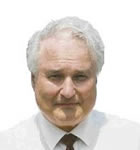9/30/2014·
Medical - Medicine
The Multiple Ways a Medical Oncology and Hematology Expert Witness Can Assist in Issues of Medical Malpractice
By:
Dr. Robert Burdick
"Has the standard of care been violated?" is the basic question in all medical malpractice cases, the answer to which may be difficult to determine because the standard of care is often unwritten, can be ever changing, and is a blend of academic and private practice opinions. In addition to having a broad base of experience with both private practice and academic medicine the expert witness must be current with the medical literature, knowledgeable about solid tumors such as cancer of the breast, lung, colon, thyroid, tongue, larynx, head and neck, esophagus, stomach, colon, rectum, anus, skin, melanoma, liver, kidneys, bladder, pancreas, ovary, testicle, hepatoma, and sarcoma, as well as soft tissue malignancies such as non-Hodgkin's and Hodgkin's lymphoma, the acute and chronic leukemia's, multiple myeloma, anemias, leukopenia, thrombocytopenia, and pancytopenia.











